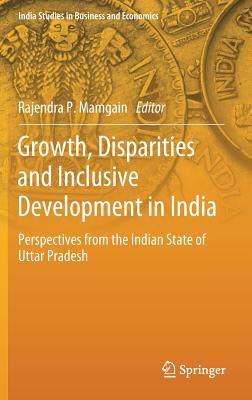21st Century Prometheus: Managing Cbrn Safety and Security Affected by Cutting-Edge Technologies
暫譯: 21世紀的普羅米修斯:管理受尖端技術影響的CBRN安全與保安
Martellini, Maurizio, Trapp, Ralf
相關主題
商品描述
21st-century safety and security risks emanating from chemical, biological, radiological and nuclear materials - whether resulting from natural events, accidents or malevolent use - are increasingly shaped by technologies that enable their development, production or use in ways that differ from the past. Artificial intelligence, the use of cyberspace, the revolution in the life sciences, new manufacturing methods, new platforms and equipment for agent delivery, hypersonic weapons systems, information tools utilised in hybrid warfare - these and other technologies are reshaping the global security environment and CBRN landscape. They are leading to a growing potential for highly targeted violence, and they can lead to greater instability and vulnerability worldwide. At the same time, technology offers solutions to manage CBRN risks. Examples are faster detection, more accurate characterisation of the nature and origin of CBRN agents, new forensic investigation methods, or new medical treatments for victims of CBRN incidents. New educational concepts help to foster a culture of responsibility in science and technology and strengthen governance. New training methods help develop practical skills to manage CBRN risks more effectively.
The book concludes that there is a growing need for a holistic framework towards CBRN risk mitigation. Traditional arms control mechanisms such as global, regional or bilateral treaties and export controls are still needed, as they provide a necessary legal and institutional framework. But laws and technology denial alone will not suffice, and institutional mechanisms can at times be weak. Given the pace of technological progress and the diffusion of critical knowledge, tools and materials, policymakers must accept that CBRN risks cannot be eliminated altogether. Instead, society has to learn to manage these risks and develop resilience against them. This requires a "softer", broadly based multi-stakeholder approach involving governments, industry, the research and development communities, educators, and civil society. Furthermore, educating policymakers that cutting-edge technologies may seriously affect global strategic stability could create incentives for developing a more creative and contemporary arms control strategy that fosters cooperation rather than incremental polarisation.
商品描述(中文翻譯)
本書描述了不斷演變的化學、生物、放射性和核(CBRN)風險環境,並突顯了「核心」CBRN 技術的進展,包括與(即興)爆炸裝置結合時的情況(CBRNe 威脅)。本書分析了相關技術如何創造新的安全風險,挑戰當前控制體系所依賴的某些假設。書中還展示了技術如何成為更有效的策略以減輕這些風險的助力。
21世紀來自化學、生物、放射性和核材料的安全風險——無論是由自然事件、事故還是惡意使用所引起——越來越受到促進其開發、生產或使用的技術的影響,這些技術的運用方式與過去有所不同。人工智慧、網絡空間的使用、生命科學的革命、新的製造方法、用於劑量投放的新平台和設備、高超音速武器系統、在混合戰爭中使用的信息工具——這些及其他技術正在重塑全球安全環境和 CBRN 風險格局。它們導致了高度針對性暴力的潛力增長,並可能導致全球更大的不穩定性和脆弱性。與此同時,技術也提供了管理 CBRN 風險的解決方案。例如,更快的檢測、更準確的 CBRN 劑量性質和來源的特徵描述、新的法醫調查方法,或針對 CBRN 事件受害者的新醫療治療。新的教育概念有助於培養科學和技術的責任文化,並加強治理。新的訓練方法有助於發展實用技能,以更有效地管理 CBRN 風險。
本書總結道,對於 CBRN 風險減輕,越來越需要一個整體框架。傳統的軍備控制機制,如全球、區域或雙邊條約及出口管制仍然是必要的,因為它們提供了必要的法律和制度框架。但僅僅依賴法律和技術拒絕是不夠的,制度機制有時也可能薄弱。考慮到技術進步的速度以及關鍵知識、工具和材料的擴散,政策制定者必須接受 CBRN 風險無法完全消除的事實。相反,社會必須學會管理這些風險並發展對抗它們的韌性。這需要一種「更柔和」的、廣泛的多方利益相關者方法,涉及政府、產業、研究與開發社群、教育者和公民社會。此外,教育政策制定者了解尖端技術可能會嚴重影響全球戰略穩定,可能會激勵制定更具創意和當代的軍備控制策略,促進合作而非逐步的兩極化。
作者簡介
Ralf Trapp (independent consultant) is a chemist and toxicologist by training. He has worked for more than 35 years on technical, legal and policy issues related to the disarmament of chemical and biological weapons. His field of work included verification and inspection methodologies, the assessment of the impact of advances in science and technology on arms control, and the relationship between arms control and international cooperation. He participated in the negotiations of the Chemical Weapons Convention, served 13 years in senior positions at the OPCW, and works today as a consultant on chemical and biological weapons arms control, safety and security. He has collaborated with, amongst others, the United Nations, the OPCW, the European Commission, the ICRC, and research groups such as the Stockholm International Peace Research Institute, the Harvard Sussex Programme, Bath University and Spiez Laboratory.
作者簡介(中文翻譯)
**毛里齊奧·馬特萊尼**(意大利科莫的因蘇布里亞州立大學)是非擴散與裁軍問題、CBRNe安全與保安的專家。他共同撰寫了多篇出版物以及特定的案例研究。他是理論物理的副教授,擁有帕維亞大學的物理學博士學位,並曾擔任哈佛大學甘迺迪政府學院國際安全計畫的貝爾法中心高級學者。他的研究與分析領域還包括CBRN非擴散與法規、網絡安全、全球科學家的參與、具有雙重用途的邊緣技術、科學與工程外交以及CBRN教育與意識。他還曾擔任意大利外交部的顧問,以及多個歐盟CBRN卓越中心項目的團隊領導或關鍵專家。
**拉夫·特拉普**(獨立顧問)是一名受過訓練的化學家和毒理學家。他在與化學和生物武器裁軍相關的技術、法律和政策問題上工作了超過35年。他的工作領域包括驗證和檢查方法、科學和技術進步對軍備控制影響的評估,以及軍備控制與國際合作之間的關係。他參與了化學武器公約的談判,在禁止化學武器組織(OPCW)擔任高級職位13年,並且目前作為化學和生物武器軍備控制、安全與保安的顧問。他曾與聯合國、OPCW、歐洲委員會、國際紅十字會以及斯德哥爾摩國際和平研究所、哈佛薩塞克斯計畫、巴斯大學和斯比茨實驗室等研究團體合作。











